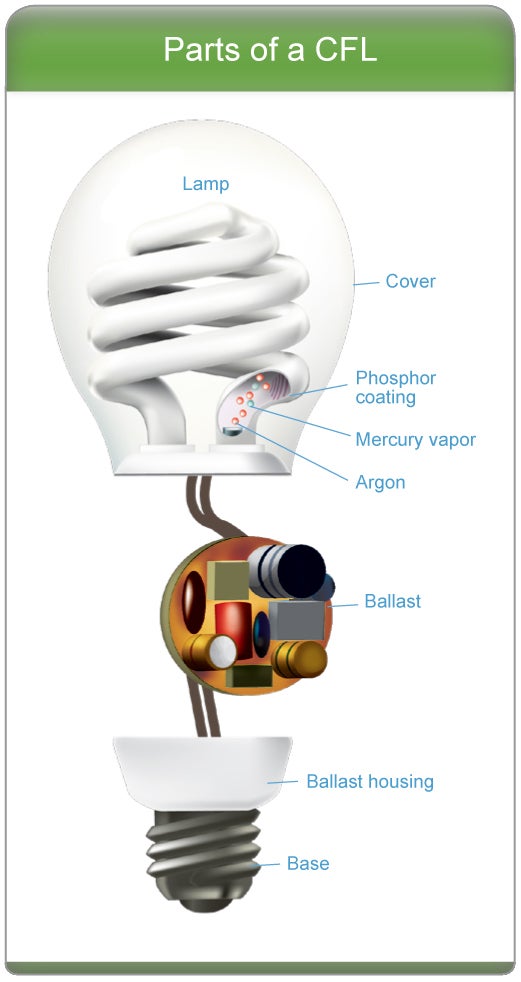DSO Electric Cooperative Inc. | 201 Dakota Drive | Solomon, KS 67480 | PO Box 286 | 1-800-376-3533
How do CFL bulbs work?
Compact Fluorescent Lights or CFL's produce light differently than incandescent bulbs, in an incandescent electric current runs through a wire filament and heats the filament until it starts to glow. In a CFL, an electric current is driven through a tube containing argon and a small amount of mercury vapor. This generates invisible ultraviolet light that excites a fluorescent coating (called phosphor) on the inside of the tube, which then emits visible light.
CFL's need a little more energy when they are first turned on, but once the electricity starts moving, use about 75 percent less energy than incandescent bulbs. A CFL's ballast helps "kick start" the CFL and then regulates the current once the electricity starts flowing.
The entire process typically takes 30 seconds to 3 minutes to complete, which is why CFLs take longer than other lights to become fully lit. CFLs with decorative covers like globe or reflector shapes have a unique design challenge that results in the tradeoff of a slower warm up time, which is why these CFLs take longer than bare spirals to reach full brightness.
Older CFLs used large and heavy magnetic ballasts that caused a buzzing noise in some bulbs. Most CFLs today - and all ENERGY STAR qualified CFLs - use electronic ballasts, which do not buzz or hum.

Color & Mood
Bulbs are available in a wide variety of shades of white light, ranging from yellowish to white to bluish white light, which allows you to customize the mood of your space. Many bulbs come in "warm" colors to match the yellowish light of incandescent bulbs, but you can also choose "cooler" colors with whiter or bluer light.
Choosing the right color
- Light color is measured on a temperature scale referred to as Kelvin (K).
- Lower Kelvin numbers means teh light appears more yellow; higher Kelvin numbers means the light is whiter or bluer.
- Most bulbs are made to match the color of incandescent bulbs at 2700-3000K.
- For a whiter light, look for bulbs marked 3500-4100K.
- For bluer white light, look for bulbs marked 5000-6500K.


